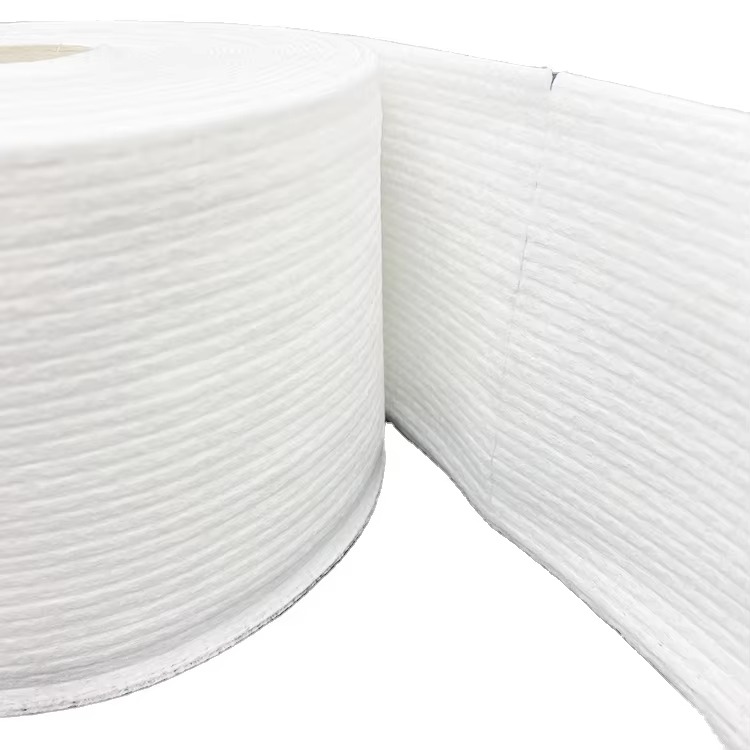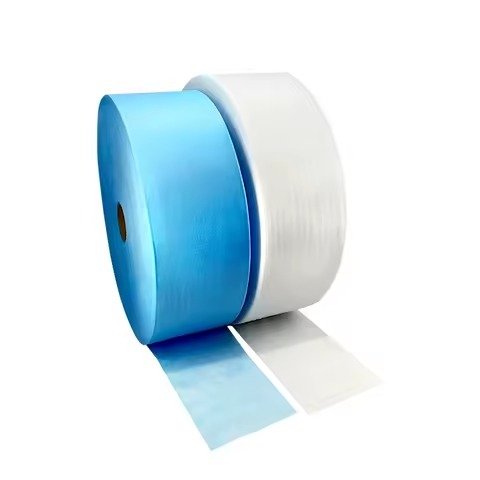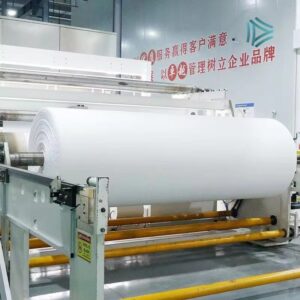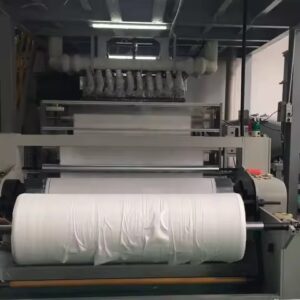Performance & Environmental Advantages of Spunlace Nonwoven Fabric
Introduction
In an era where consumers demand high performance, comfort, and sustainability in everyday products, the materials industry is facing unprecedented challenges. Manufacturers must balance functionality with environmental responsibility while keeping production efficient and cost-effective. Among modern textiles, Spunlace Nonwoven Fabric has emerged as a game-changer that meets these requirements.
By combining hydroentanglement technology with natural and synthetic fibers, spunlace nonwovens deliver an impressive set of performance benefits while maintaining a strong sustainability profile. This makes them indispensable across industries like healthcare, hygiene, cosmetics, household cleaning, automotive, packaging, and agriculture. (You can learn more about Top Uses of Spunlace Nonwoven Fabric in Key Industries)
In this article, we will explore the dual advantages of spunlace fabrics: their superior physical performance and their environmental benefits, showing why they stand out among both traditional textiles and other nonwovens.
Performance Advantages of Spunlace Nonwoven Fabric
1. Superior Absorbency
One of the defining features of spunlace fabric is its exceptional moisture absorption. Thanks to its porous fiber structure, spunlace can quickly soak up water, oil, or other liquids and lock them in. This makes it the preferred material for:
Wet wipes and baby wipes – where rapid absorption ensures effective cleaning.
Medical dressings and pads – absorbing wound exudates to promote healing.
Household cleaning cloths – removing spills efficiently without smearing.
Compared to woven cotton or polyester cloths, spunlace absorbs liquid faster and distributes it evenly across the surface, keeping wipes effective until disposal.
2. High Mechanical Strength
Despite being soft and lightweight, spunlace nonwovens offer excellent tensile strength and tear resistance, even in wet conditions. The hydroentanglement process creates a dense, interlocked web that holds together under stress.
Wet strength is critical for wipes and medical supplies, which must not disintegrate during use.
Tear resistance ensures durability in industrial cleaning and protective clothing.
Dimensional stability prevents the fabric from stretching or deforming under friction.
This unique balance of softness and strength makes spunlace more reliable than traditional paper-based or chemically bonded alternatives.
3. Skin-Friendly Softness
Another major advantage of spunlace is its cotton-like hand feel. Because it contains no chemical binders or resins, the fibers retain their natural softness. This makes it ideal for products that come into direct contact with sensitive skin, such as:
Baby care wipes and diapers
Sanitary napkins and feminine hygiene products
Medical masks and surgical gowns
Cosmetic pads and facial masks
The absence of irritants ensures comfort even during prolonged use. Many spunlace fabrics are dermatologically tested, further enhancing their safety for sensitive applications.
4. Hygiene & Safety
Spunlace nonwoven fabrics are manufactured under controlled conditions with ISO-certified processes, ensuring cleanliness and low bioburden. Their structure is lint-free, meaning fibers do not shed easily, reducing contamination risks in medical, pharmaceutical, and food-processing environments.
Additionally, spunlace can be treated with antibacterial finishes to further enhance hygiene. For example:
Medical wipes may be infused with disinfectant solutions.
Cosmetic masks may incorporate active ingredients for skincare.
Food-service wipes may include antibacterial coatings to prevent cross-contamination.
5. Breathability
Unlike plastic films or resin-bonded fabrics, spunlace allows airflow through its porous structure, reducing discomfort caused by heat and humidity. This property is essential for:
Surgical masks and gowns – preventing heat buildup during long procedures.
Sanitary products – keeping skin dry and reducing bacterial growth.
Clothing applications – improving comfort for sportswear and underwear.
Breathability not only improves comfort but also helps regulate moisture, making spunlace suitable for extended wear.
6. Versatility & Customization
Spunlace nonwovens can be engineered to meet diverse performance requirements:
Lightweight fabrics (25–40 g/m²) – used in wipes, tissues, and filters.
Medium-weight fabrics (50–80 g/m²) – for gowns, drapes, and home cleaning.
Heavy-duty fabrics (100–120 g/m²) – used in automotive interiors, industrial wipes, and protective clothing.
Customizations such as embossing, apertures, and functional coatings further expand possibilities, allowing spunlace to mimic woven textiles while offering unique nonwoven advantages.
Environmental Advantages of Spunlace Nonwoven Fabric
As industries worldwide transition toward eco-friendly manufacturing, spunlace stands out for its environmental benefits.
1. Binder-Free & Chemical-Free Production
Unlike resin-bonded fabrics, spunlace is produced without harmful adhesives or binders. The hydroentanglement process relies solely on water pressure to entangle fibers. This reduces:
Chemical pollution during production
Harmful residues in finished products
Wastewater contamination compared to dye-intensive textile manufacturing
The result is a cleaner production method that aligns with green manufacturing standards.
2. Biodegradability
When made from natural fibers such as cotton, viscose, or bamboo, spunlace nonwovens are fully biodegradable. They break down in soil or composting environments, leaving no toxic residues.
This is particularly important in the context of:
Wet wipes and sanitary products, which are often flushed or discarded.
Agricultural covers, which can degrade naturally without harming soil.
Disposable medical supplies, reducing landfill waste.
By contrast, many synthetic textiles and plastics persist in the environment for decades.
3. Recyclability & Resource Efficiency
Spunlace fabrics made with recyclable fibers, such as polyester or regenerated cellulose, can be recycled and reused in secondary products. Manufacturers also recycle production scraps, reducing material waste.
Additionally, advanced production lines now incorporate:
Water recycling systems – reusing hydroentanglement water to minimize consumption.
Energy-efficient drying technologies – lowering carbon emissions.
Heat recovery systems – cutting energy waste.
Together, these measures significantly reduce the carbon footprint of spunlace manufacturing.
4. Reduced Environmental Burden Compared to Plastics
With increasing bans on single-use plastics, spunlace nonwoven fabrics are becoming popular in packaging and hygiene applications. They serve as an eco-friendly replacement for plastic bags, wrappers, and disposable cleaning products.
For example:
Spunlace shopping bags can replace plastic bags.
Food-grade spunlace wraps can reduce plastic packaging.
Flushable wipes made from spunlace reduce microplastic pollution.
This positions spunlace as a sustainable solution in industries facing stricter environmental regulations.
5. Alignment with Global Sustainability Goals
Governments and industries worldwide are adopting stricter standards for eco-friendly production and waste management. Spunlace nonwoven fabrics align well with:
European Union directives on single-use plastics
ISO 14001 environmental management systems
UN Sustainable Development Goals (SDGs) for responsible consumption and climate action
By adopting spunlace, manufacturers can meet both consumer demand for green products and regulatory requirements.
Balancing Performance and Sustainability
The true strength of spunlace nonwoven fabric lies in its ability to combine top-tier performance with eco-conscious production. Few materials manage to balance both so effectively.
For example:
A medical wipe made from spunlace can be strong, absorbent, and sterile while also being biodegradable.
A household cleaning cloth can be durable and reusable, yet recyclable at end-of-life.
An agricultural crop cover can regulate soil temperature and moisture while degrading naturally after harvest.
This balance makes spunlace a future-ready material, capable of meeting evolving industrial, consumer, and environmental demands. Innovations in fiber technology are paving the way for the future of spunlace nonwoven fabrics
Conclusion
The success of Spunlace Nonwoven Fabric is no accident—it is the result of a production method that prioritizes both performance excellence and environmental responsibility.
From its absorbency, strength, softness, and hygiene properties to its biodegradability, recyclability, and eco-friendly production, spunlace embodies the qualities that modern industries and consumers seek in sustainable materials.
As demand grows for hygienic, disposable, and sustainable products, spunlace is set to play an even bigger role in sectors ranging from healthcare to packaging, agriculture to automotive. It is not only a material of the present but also a cornerstone of the future of sustainable textiles.






